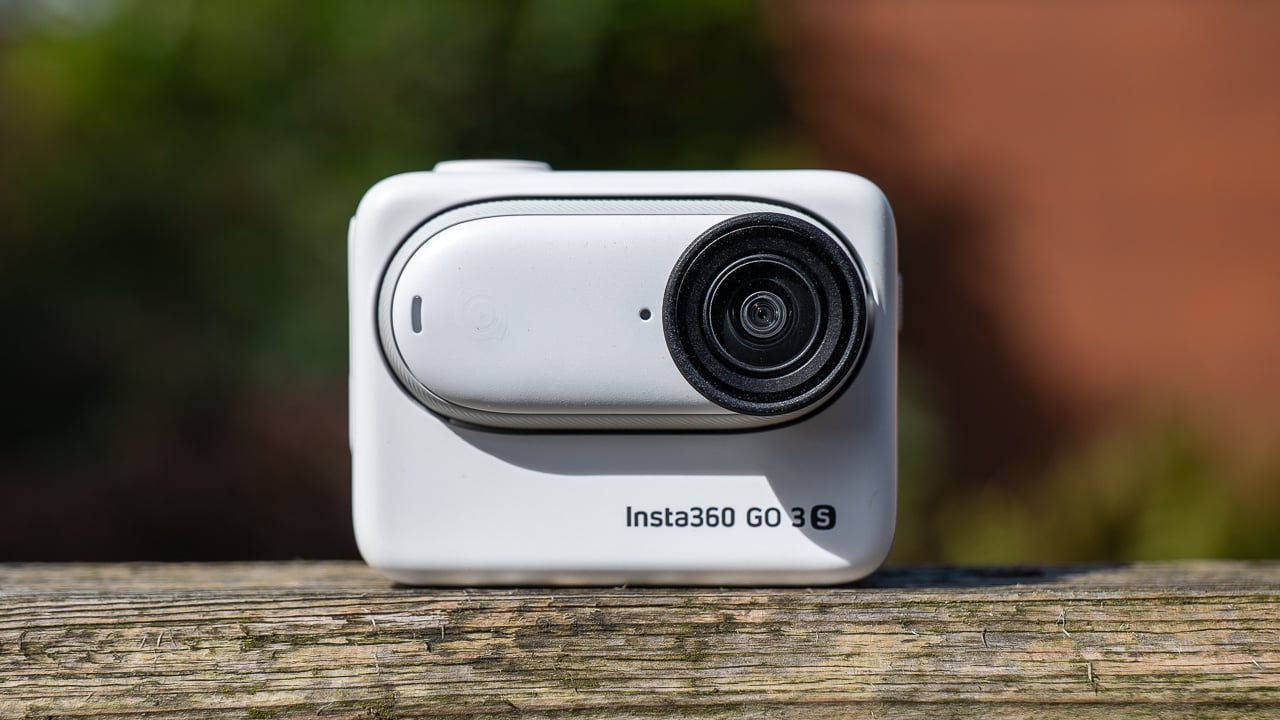
Insta360 has released the GO 3S, possibly the tiniest 4K camera available. But is the extra resolution enough to warrant an upgrade?
Insta360's GO series of cameras has proven extremely popular. With their tiny size, the GO range of cameras slips into a pocket with ease and makes them unobtrusive to use. Until now, one of the main limitations has been that resolution has been limited to a maximum of 2.7K, which clearly puts them behind the competition.
Enter the GO 3S, which is less an entirely new camera than a spec upgrade that boosts the maximum resolution of the GO 3 to 4K, along with a few other extra features and capabilities. Is the upgrade worth it? Let's find out.
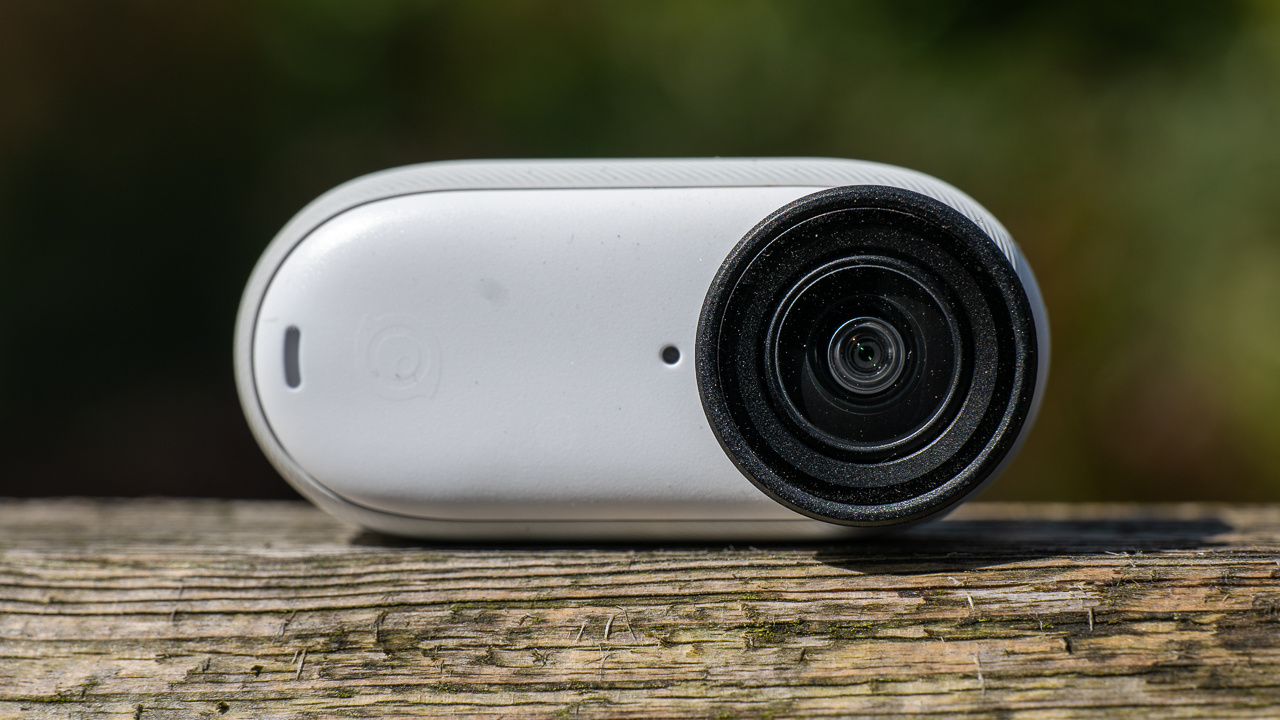
Outside the Action Pod, the GO 3S is a tiny camera.
Insta360 GO 3S specs and features
Obviously, the resolution bump to 4K is the headline new feature of the GO 3S, but there are other upgrades too.
Inside, the GO 3S features a new processor, which is 50% faster than the one in the standard GO 3. It's this that allows for the resolution increase because, surprisingly, the GO 3S contains the same sensor that's found on the previous camera. There's also a new lens, but I'll come to that a bit later.
Better processing means that higher frame rates are possible, for example 200fps in 1080p and 100fps in 2.7K. Other minor features include Interval Video, which automatically takes short clips during your activity, along with 4K Timelapse and Timeshift modes. Finally, the GO 3S is compatible with Apple's Find My system. Possibly quite handy to have for a camera that's the size of a thumb!
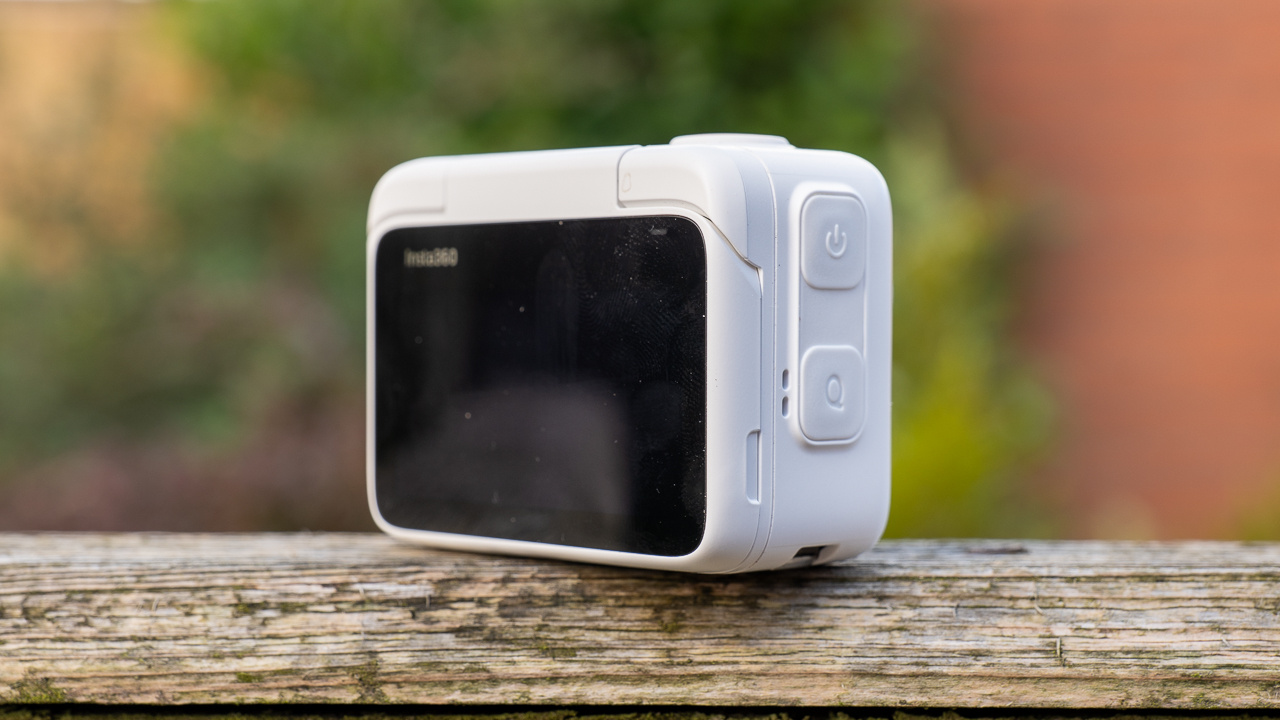
The large LCD makes for easy viewing, as well as easy remote operation of the camera.
Using the GO 3S
The GO 3S uses the same Action Pod as the GO 3, which means that anyone who owns the previous camera can upgrade simply by buying the camera itself. Pretty much everything on the interface is the same as the GO 3, bar the addition of the new functionality.
Insta360's user interface is well designed, clear, and responsive to use. The Action Pod isn't waterproof, but with the camera mounted to it, it is splash proof. For those who aren't familiar with the Action Pod, it transforms the camera to a more GoPro sized rig, featuring a large flip up LCD screen and it's own battery, which charges the camera when it's attached.
The Action Pod allows for a lot of creativity because you can remotely view what the camera is seeing. For example, you could mount the GO 3S on the end of a long selfie stick and attach the Action Pod at the other end so that you can see the framing of the image.
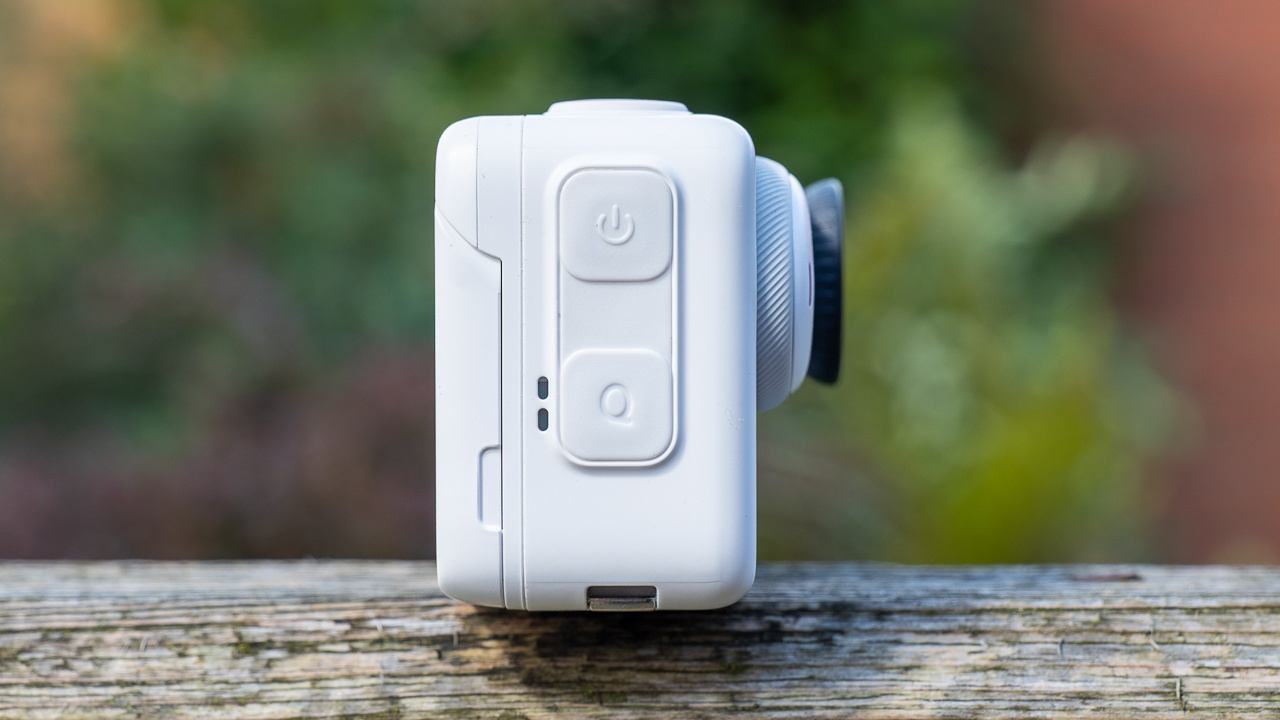
The side of the GO 3S features a Quick select button for fast mode selection.
It's important to point out that the GO 3S isn't an out and out action camera. It has been designed mainly for lifestyle, but it can be used for action camera purposes if asked to. The extremely small form factor and lightness of the camera means that it can be mounted to helmets or chest harnesses with minimal intrusion. It also means that it's supremely easy to achieve creative shots, such as mounting it on the chain stay of an MTB, or the cables on a kitesurfing wing. It is a shame that the Action Pod isn't waterproof, because in the latter scenario it would have been possible to control the camera remotely.
The main drawback with using the GO 3S as an action camera outside of the Action Pod is the limited battery life. Insta360 claims around 38 minutes of runtime in 1080p, and I found I was getting around 30 minutes in 4K. So, you will possibly want to use the Interval Video option to record short clips of your activity, although there's no guarantee that you'll capture your best moments while doing this.
Generally though, the GO 3S isn't a camera that you'll leave running for long periods like you might do with a GoPro or DJI Action series camera, unless you mount it inside the Action Pod. The camera does charge fairly quickly, although if you are doing an adventure activity it's a bit of an inconvenience to keep needing to charge it up again. It's also worth noting that the GO 3S records to internal storage rather than an SD card. So, once it's full you'll need to offload your footage to a phone or computer before formatting it again.
The GO 3S keeps the same magnetic mounting system as the GO 3, which makes swapping the camera between mounts super fast and easy. Note that the magnetic mount that the GO 3 series uses is different from the one that the Ace Pro features, which means that Insta360 is now maintaining two separate magnetic mounting systems. Hopefully the company will unify things in future cameras, preferably to the more robust system that the Ace Pro uses. When I tested the original GO 3 I lost the camera for a few minutes on the beach after I knocked one of the mounting clips while it was mounted to my surf kayak. This isn't a problem that would afflict the Ace Pro style mount.
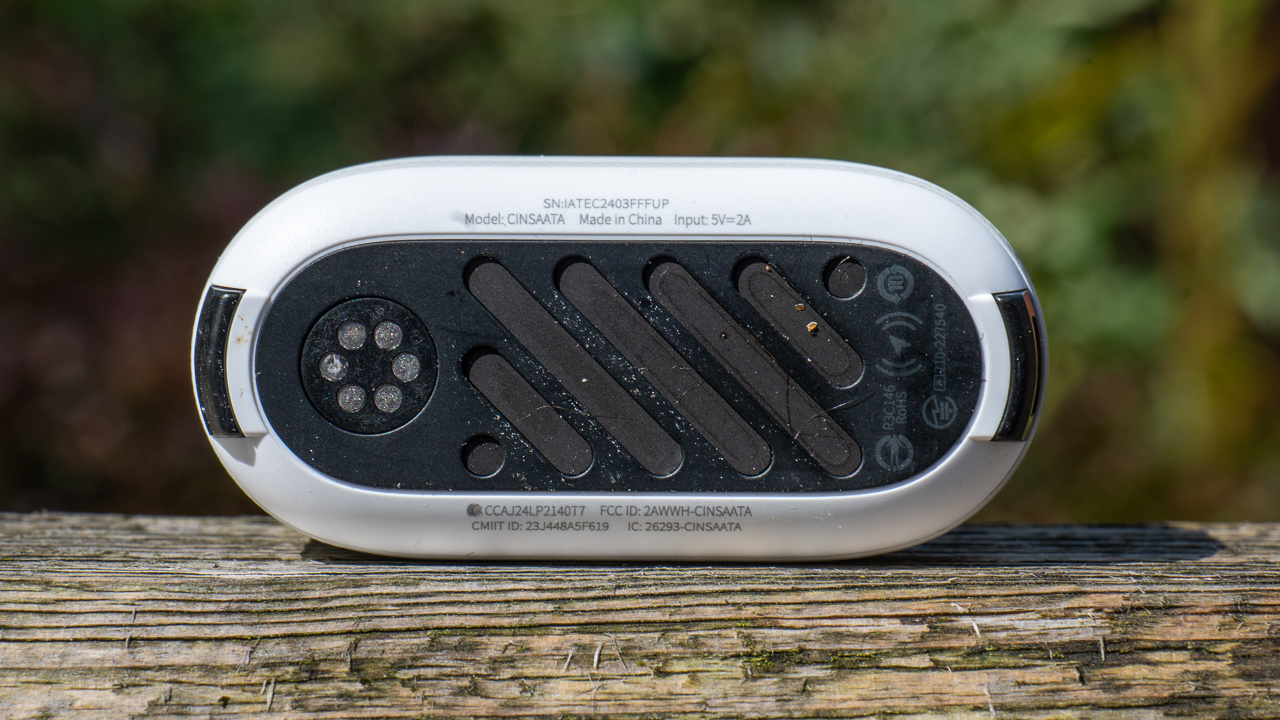
The GO 3S is magnetic, so it can be affixed to any magnetic metal object, and to Insta360's own magnetic action mounts.
Lens focal length
Although the GO 3S isn't designed as an out and out GoPro alternative, there are crossover uses. Even for lifestyle shooting, particularly for POV, you need a wide lens. It's here that the GO 3S loses out to the previous GO models.
One thing I loved about the GO 2 was the gloriously wide lens that had minimal distortion. The footage was recorded effectively as one half of a 360 camera in a spherical format. Insta360's software then processed the footage resulting in an incredible wide POV view with full horizon levelling.
This changed with the GO 3, which narrowed the FOV somewhat. Footage could be processed in camera, or FreeFrame video mode could be used to process the image in software with the FOV being chosen in post. The results were still pretty good, even if the angle of view was narrower than the GO 2, and it could still be used to get some great POV shots.
The GO 3S on the other hand has its lens focal length increased to the point where it's not quite as useful as a POV camera. While the GO 3 had a 35mm equivalent of an 11mm lens, the GO 3S narrows this to 16mm, which is quite a shift. And it's noticeable, particularly in the vertical axis.
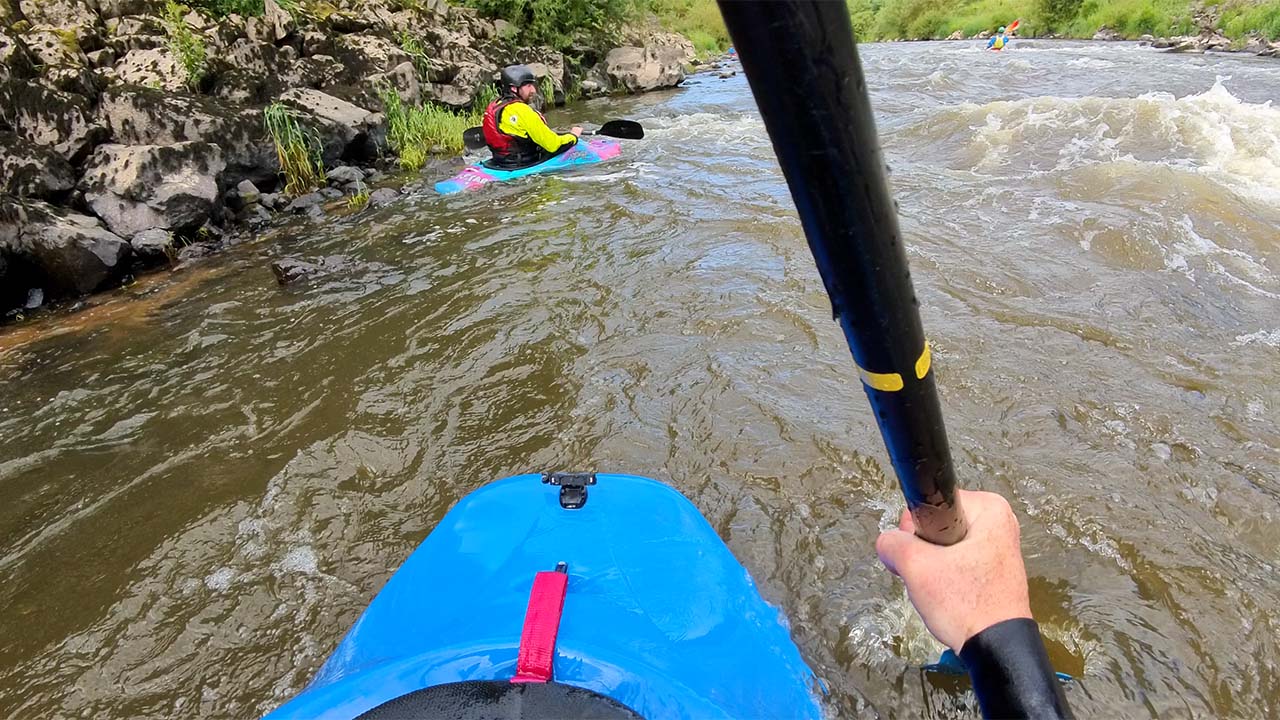
The increased focal length on the GO 3S makes for a much narrower field of view for POV use.
Using the GO 3S on a kayaking helmet gives a similar angle of view to Insta360's Ace Pro camera, which for me, simply isn't wide enough for POV purposes. Now, most people aren't white water kayaking, but they are mounting the camera to chest mounts such as Insta360's magnetic pendant for mountain biking or for general lifestyle vlogging. Both of which require a decent, wide angle of view to achieve a certain level of immersive POV.
A narrower lens means that it's harder to see what's going on in a POV shot, and drastically reduces the sense of speed in activities like cycling. Furthermore, 360 horizon levelling also suffers, with the final FOV being narrowed to the point where it just isn't practical for most purposes.
The narrower FOV also has a knock on effect when it comes to using FreeFrame mode. FreeFrame mode lets you shoot your footage and then choose the FOV in post. In previous GO cameras this mode also allowed a small amount of reframing of the image up and down. This ability is now gone, although the mode does still allow you to change your aspect ratio, FOV setting, and stabilisation level in post.

Colour and skin tone look good. Shame about the model!
The positives
Okay, so those are my main criticisms out of the way, what are the upsides of the GO 3S? Well, as I previously mentioned, the size of the camera makes it incredibly unobtrusive to use. The image quality that it produces is also very good, with picture adjustments such as sharpness settings being available as well, for fine tuning. There's no 10-bit option available, since Insta360 doesn't believe that its core user base would ever make use of it. Regardless, you won't find much to fault in the GO 3S's image quality for such a tiny camera.
The slow motion options are fun to use, particularly because it's so easy to place the camera in creative positions. The magnets within the camera means that you can attach it to metal objects such as lamp posts or anything else you might find while out and about. I will note that 200fps, whilst being great to have, does come at the cost of spacial aliasing and compression artefacts. These aren't very noticeable on a mobile phone screen, but they are very apparent on a computer monitor. So, for slow motion I would recommend 100fps in 2.7K mode instead if the footage is going to be shown larger than a phone screen.
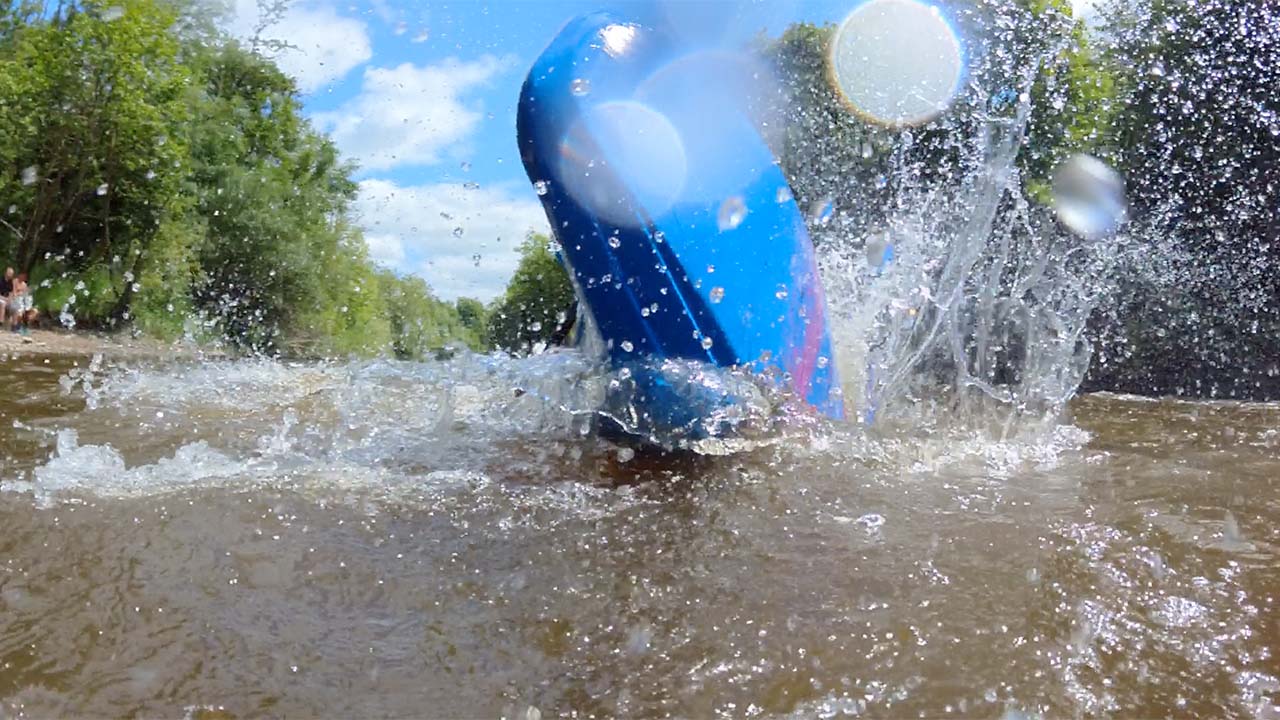

Slow motion is a lot of fun, however be aware of the detail loss at the highest frame rates.
Conclusions
The question of whether to upgrade to the GO 3S or to purchase the standard GO 3 will depend greatly on how you see yourself using the camera. For generalised shooting, such as vlogging or filming other family members on vacation, the GO 3S with its increased resolution might be the way to go. For that type of use, a super wide lens isn't as much of a priority.
On the other hand, if you see yourself using the camera for all the purposes I mention above, as well as for casual action camera duties or any other POV style shots, the standard GO 3 would make more sense with its wider FOV.
Both cameras produce a great image considering their tiny nature, but the resolution increase in the GO 3S does not in any way make the GO 3 obsolete due to the differing nature of the lens focal length. So, my primary advice would be to consider all the different uses you will be putting the camera to and come to a conclusion based on that.
The Insta360 GO 3S is available for $399, while the standard GO 3 can be purchased for $319. Existing owners of the GO 3 can purchase a standalone GO 3S for $239 (64GB) and $269 (128GB).
tl;dr
- The Insta360 GO 3S features a resolution upgrade to 4K, a new processor, and a faster frame rate capability for higher quality videos.
- The camera uses the same Action Pod as the GO 3, making it easy to upgrade, and the user interface is well-designed and responsive
- While the GO 3S is primarily designed for lifestyle use, its small form factor allows for creative mounting options and versatile usage.
- The camera's limited battery life and internal storage may pose challenges for extended use.


Comments